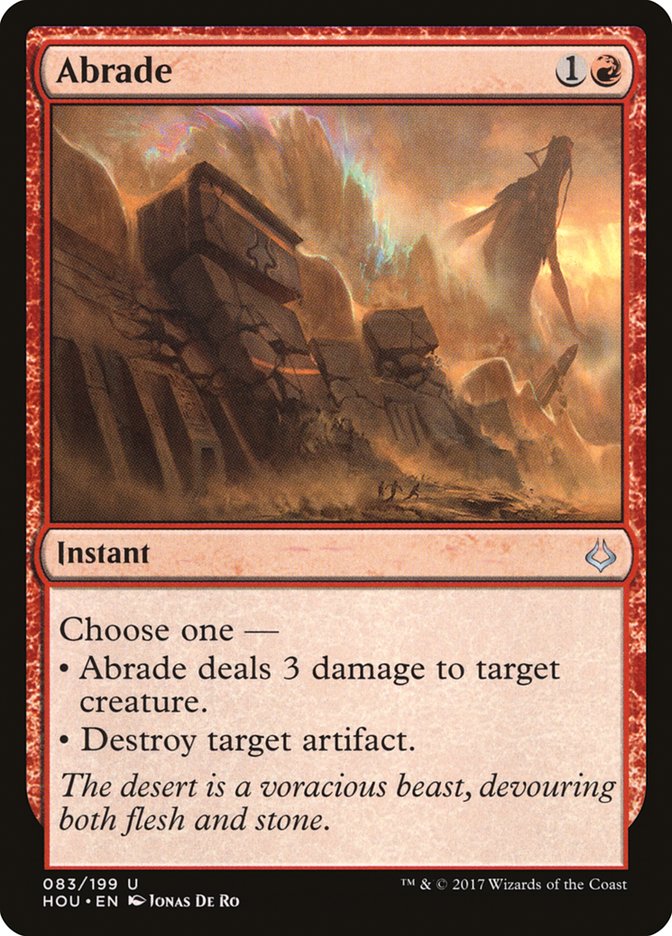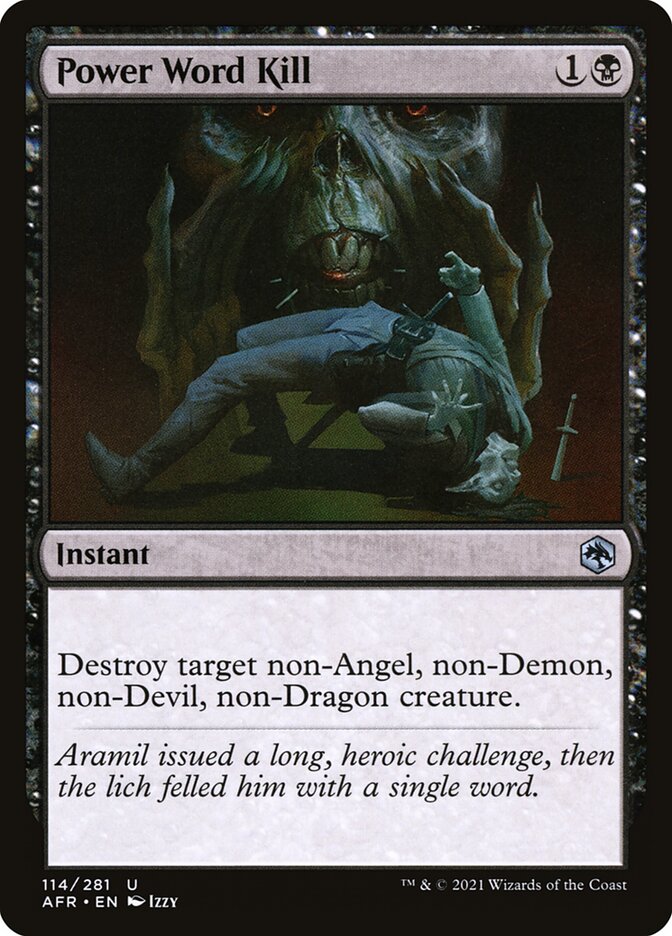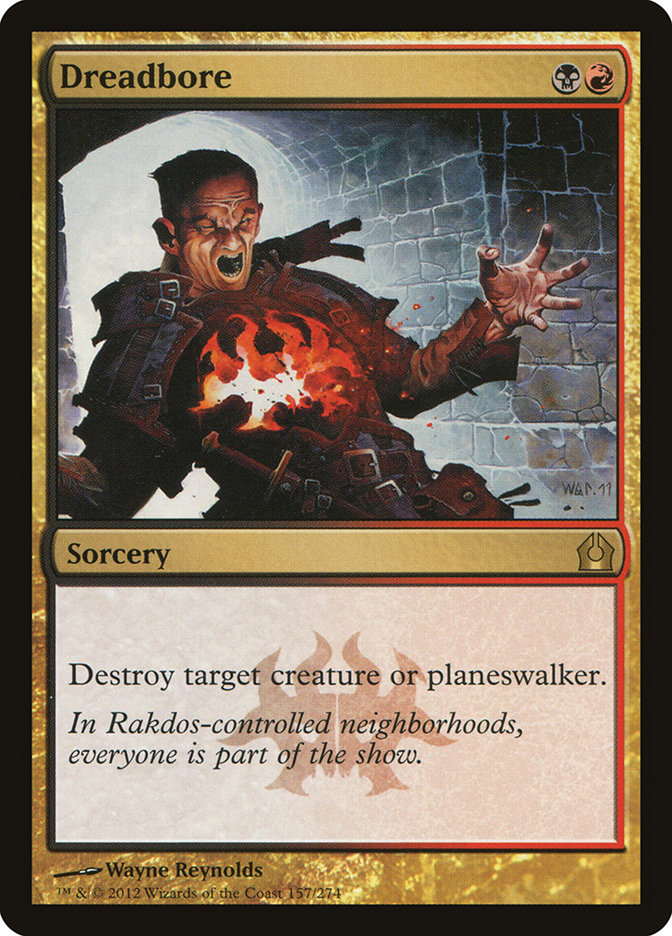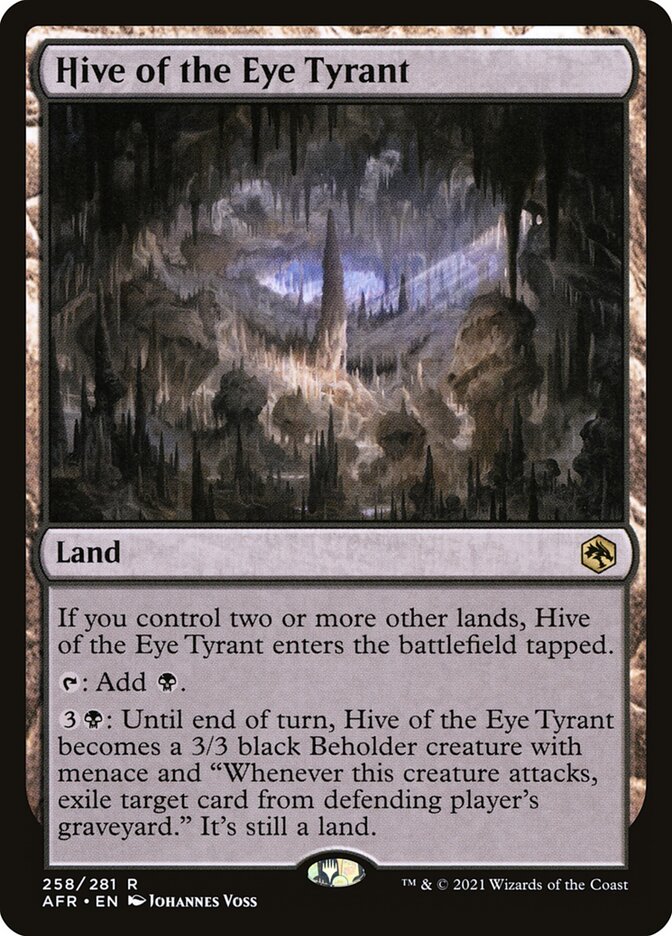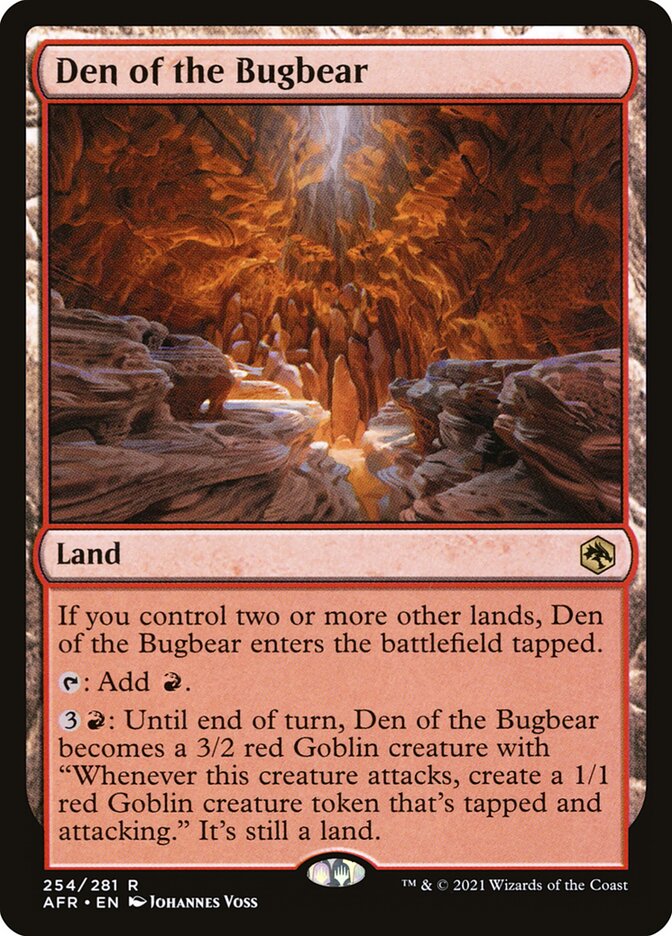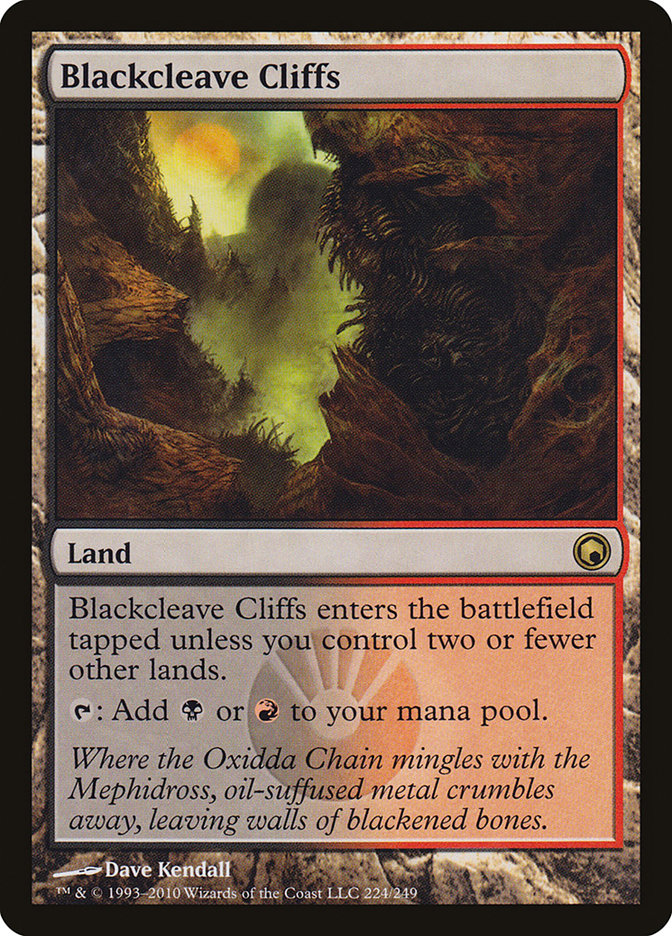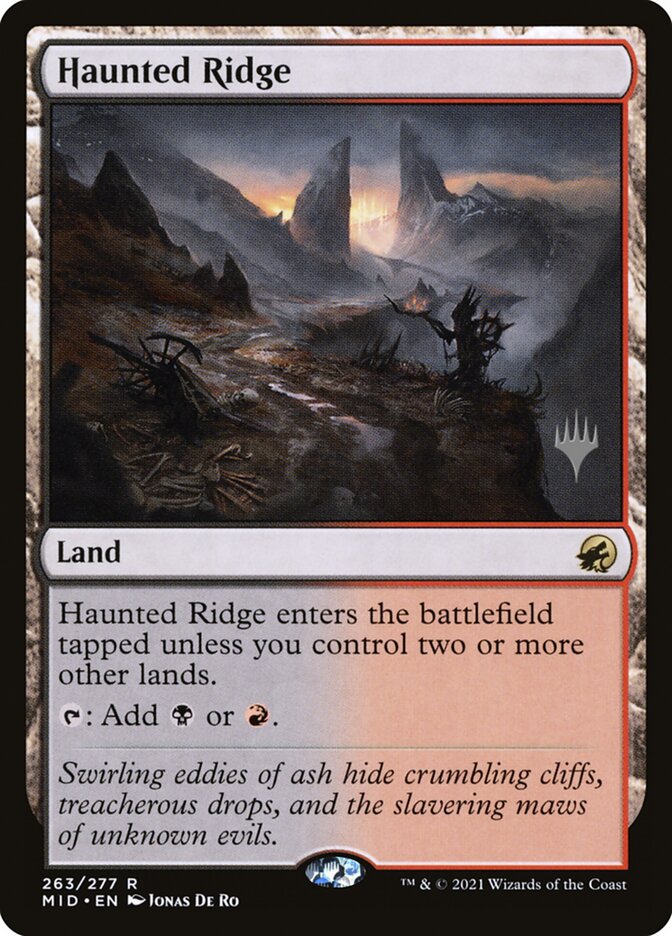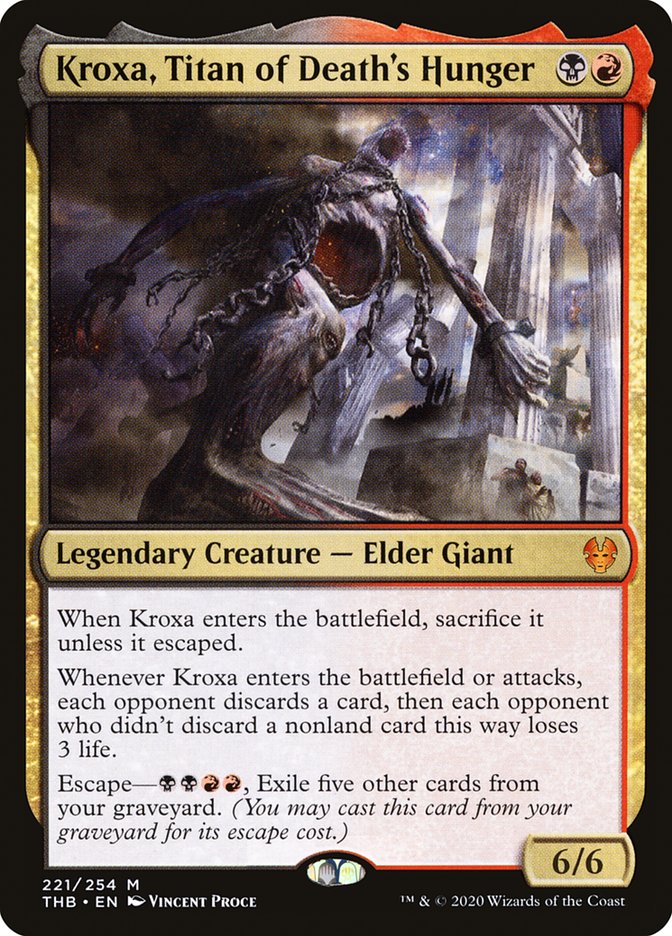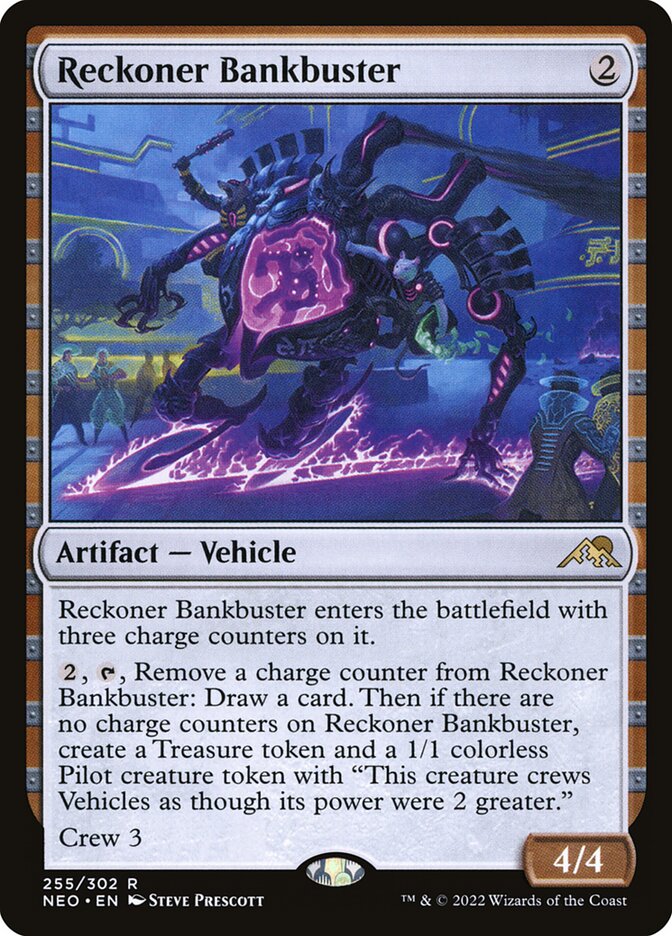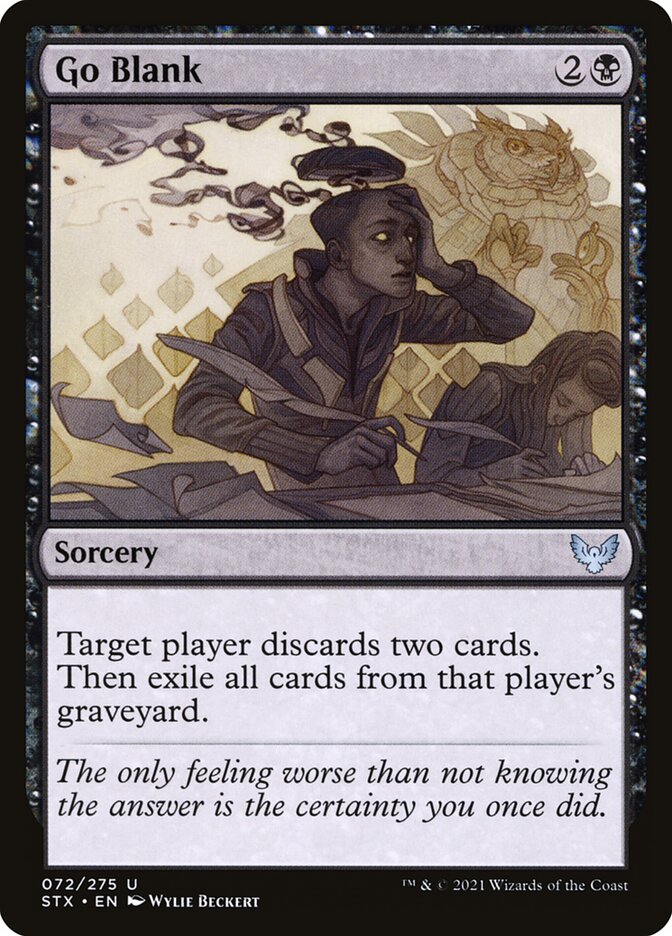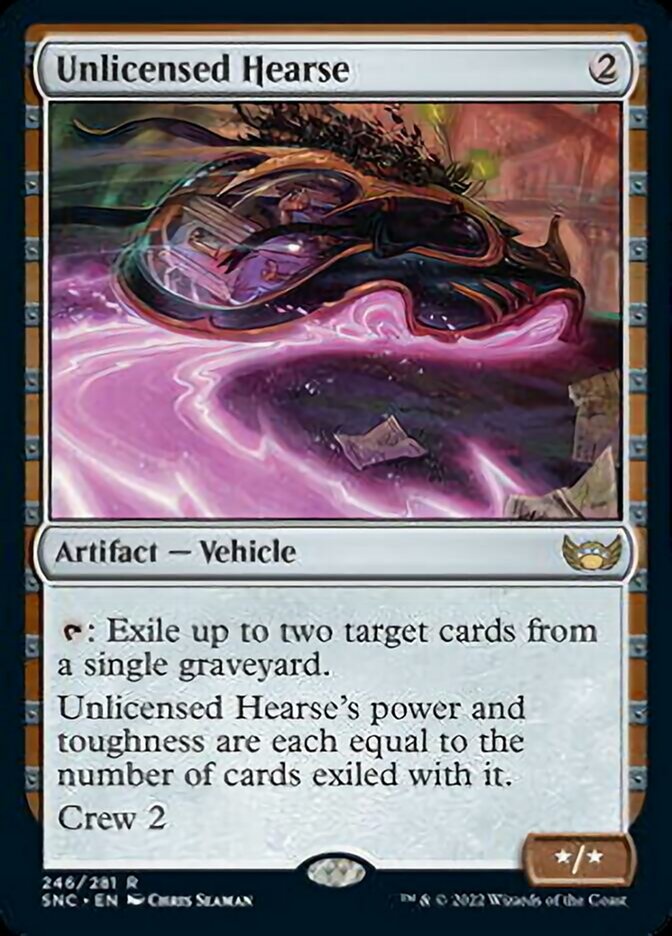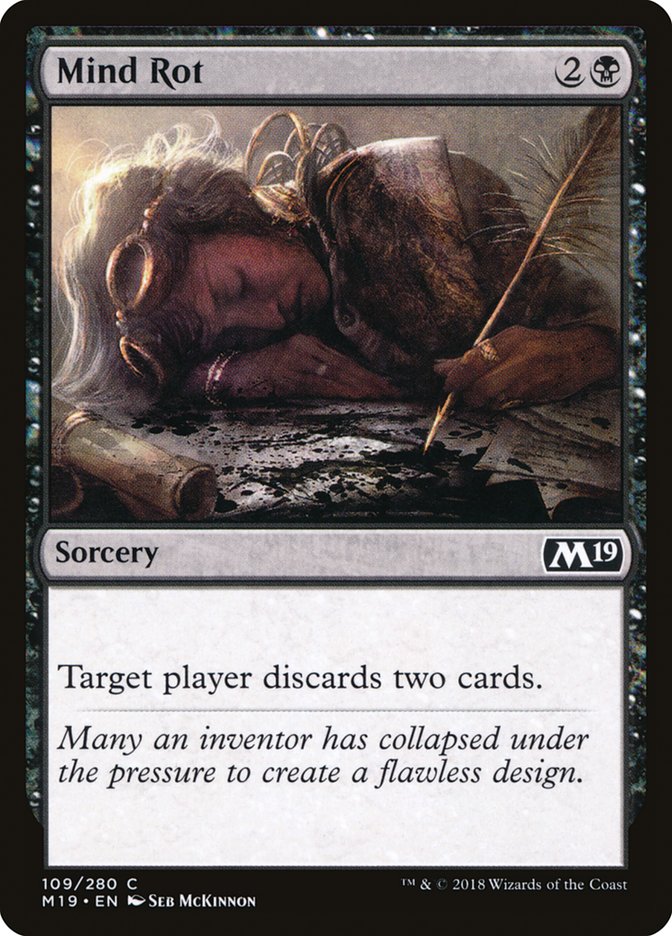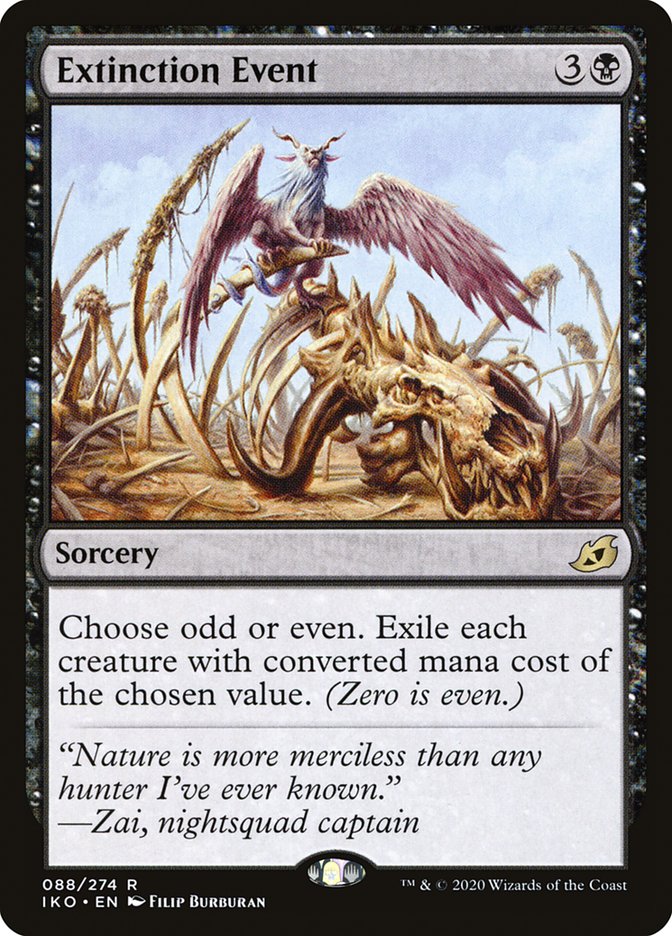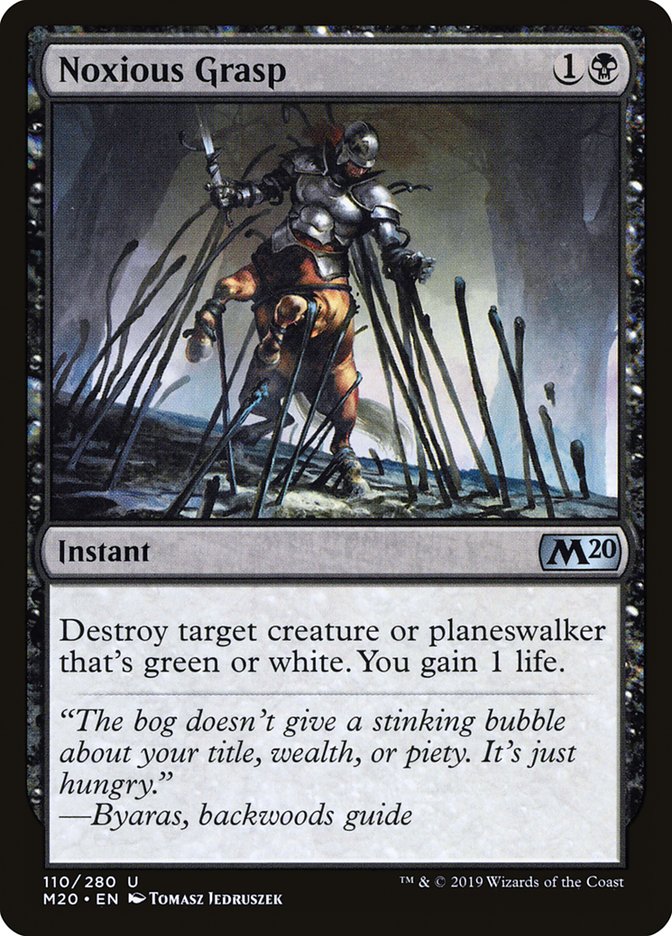Winning the Manatrader Series: A Deep Dive into Pioneer Rakdos Midrange
Rakdos Midrange in the Current Meta
Recently, I have been achieving great results with Rakdos Midrange in various MTGO events, including a win in the Manatraders series . While there is no single "best" archetype in Pioneer , Rakdos Midrange is well-suited for open fields where it can face a variety of different decks. The deck's strong proactive curve and effective interaction give it the ability to compete with almost any archetype in the format.
Yet, there is also room for customization on the mana base, the removal suite and the sideboard.
First, I will share my decklist, card choices, game plan, and sideboard plan for every matchup.
Updated Decklist
After winning the Manatraders, I made a few minor tweaks to the deck, which is currently as follows:

| Creature [20] | ||
|---|---|---|
| 2 Misery's Shadow | $0.49 | |
| 4 Bloodtithe Harvester | $0.35 | |
| 4 Bonecrusher Giant | $0.59 | |
| 4 Fable of the Mirror-Breaker | $21.99 | |
| 3 Graveyard Trespasser | $0.99 | |
| 3 Sheoldred, the Apocalypse | $79.99 | |
| Artifact [2] | ||
|---|---|---|
| 2 Reckoner Bankbuster | $2.29 | |
| Instant [8] | ||
|---|---|---|
| 4 Fatal Push | $2.49 | |
| 4 Power Word Kill | $0.35 | |
| Sorcery [5] | ||
|---|---|---|
| 4 Thoughtseize | $11.99 | |
| 1 Dreadbore | $0.49 | |
| Land [25] | ||
|---|---|---|
| 4 Blightstep Pathway | // | $6.49 |
| 2 Blackcleave Cliffs | $2.79 | |
| 2 Castle Locthwain | $4.99 | |
| 3 Haunted Ridge | $8.99 | |
| 3 Hive of the Eye Tyrant | $4.49 | |
| 1 Mountain | $0.01 | |
| 1 Sokenzan, Crucible of Defiance | $6.49 | |
| 1 Urborg, Tomb of Yawgmoth | $39.99 | |
| 3 Swamp | $0.01 | |
| 1 Takenuma, Abandoned Mire | $12.99 | |
| 4 Blood Crypt | $17.99 | |
| Sideboard [15] | ||
|---|---|---|
| 4 Duress | $0.35 | |
| 3 Extinction Event | $0.69 | |
| 2 Noxious Grasp | $0.35 | |
| 2 Go Blank | $0.69 | |
| 2 Reckoner Bankbuster | $2.29 | |
| 2 Unlicensed Hearse | $0.69 | |
 $155.91 Tix @cardhoarder
$155.91 Tix @cardhoarder
 $3.90 / Week @cardhoarder
$3.90 / Week @cardhoarder
 $512.71 @tcgplayer
$512.71 @tcgplayer
 $624.97 @cardkingdom
$624.97 @cardkingdom
Card Choices
Misery's Shadow
Rakdos Midrange is in need of a second proactive two-drop to complement Bloodtithe Harvester. In this scenario, Misery's Shadow is a suitable addition to the archetype.
I explored various options to gain an advantage in the Mono-Green matchup, and among the pool of functionally playable cards, Misery's Shadow emerged as the best choice. Kalitas is another alternative for this purpose, but the four-mana curve is already quite crowded, and Kalitas can be somewhat ineffective at removing Old-Growth Troll due to its later arrival.

The Removal Split
No removal is perfect, and each has its pros and cons. The three main options are Abrade, Power Word Kill, and Dreadbore.
No removal is perfect, and each has its pros and cons. The three main options are Abrade, Power Word Kill, and Dreadbore.
Dreadbore excels against Mono-Green and Azorius due to its effectiveness against planeswalkers, while Abrade is valuable in the mirror match and against Greasefang, particularly when dealing with troublesome vehicles. Power Word Kill is a generally reliable answer that always performs well. In metagames with fewer White Weenies and numerous Selesnya angels, Power Word Kill can be substituted for Heartless Act.
Basic Lands
Mountain isn't an ideal inclusion in this deck, as there are multiple cards with a black mana cost (B), and it's common to want to play them in succession within the same turn. However, if you don't include Mountain and your opponent is aware of it, you may find yourself outmaneuvered. Ultimately, this decision depends on whether you're aiming to participate in a tournament with open or closed decklists.
Castle and Manlands
Utility lands excel in midrange and control metagames. Although they can enter the battlefield untapped, they often don't, which can be a liability against fast-paced archetypes where every single mana is crucial. With aggro currently less prevalent in the format, I've chosen to include as many as five utility lands, which isn't the maximum (some lists go up to seven) but is still on the high side.
There is a legitimate debate between Hive of the Eye Tyrant and Den of the Bugbear. As a manland, Den is arguably slightly better, but Hive is far superior as a mana producer compared to the red one.
Another factor to consider is that it's generally better to have one of each land rather than two of the same. In the end, I settled for a 3-0 split because I couldn't afford to have three red sources in the deck. If I were to play in a closed decklist tournament (where my Mountain would become a Swamp), I'd include the first Den over the third Hive.
Blackcleave Cliffs and Haunted Ridge
Haunted Ridge is the ideal land after the second turn and is also acceptable on turn 1 since you don't always have a play. However, it's quite weak on turn 2, especially when you draw a combination of Ridges, Hives, and/or Castles. I opted to include a few Cliffs and not the full set of four Ridges to avoid these scenarios, particularly with four Duress cards in the sideboard.
After sideboarding, you often want to curve Duress, creature, and Fable, and drawing two Ridges could be a game-losing situation or warrant a mulligan.
Kroxa
Rogue numbers are currently on the rise, making it useful to have a few escape cards in the 75. The problem I have with Kroxa is that it's quite awkward in the mirror match. Sure, when you manage to escape it into play, it's a guaranteed two-for-one that can even swing the game in your favor.
However, the presence of Graveyard Trespasser makes it difficult to cast before the turn you escape it, and even cycling it with Fabled Passage can be risky. You can't really afford to have this card sit in your hand for an extended period of time. Moreover, Kroxa is weak in many matchups, so I settled on Reckoner Bankbuster as my tool of choice for the mirror, since the card has no inherent weaknesses in the mirror and performs better in several matchups.
Sideboard Choices
4 Duress
The first few copies of Duress are quite standard, as the card is crucial in the combo and control matchups. However, the inclusion of the third and fourth copies is more open to debate.
Alternative anti-control/combo cards that could replace the third and fourth copies of Duress are cards like Necromantia. Although these "anti-cards" excel in the matchups they target, they are relevant in so few matchups that you run the risk of sideboarding suboptimally against many tier 2 decks if you choose to include them.
For me, the deciding factor was discovering that Duress is actually effective against mono-green and phoenix decks, which makes the card relevant in numerous matchups.
Go Blank / Unlicensed Hearse
This is my graveyard hate package. There are multiple options here but I chose to have the maximum of Go Blank because I wanted to be solid against Lotus Field and Mind Rot is a fine threat in this match-up.
This is my graveyard hate package. There are multiple options here but I chose to have the maximum of Go Blank because I wanted to be solid against Lotus Field and Mind Rot is a fine threat in this match-up.
Going for the full three of them was risking not sideboarding against tier2 decks and for those reasons I chose this split.
Extinction Event
It's not the perfect sweeper against other creature decks (Ritual of Soot is much better against White Weenie, for example), but Mono-Green is such a closely contested matchup and is so heavily played that I made this choice.
Noxious Grasp
This card is awesome. It comes in so many match-ups (WW, Mono-Green, Azorius Control, Greasefang) and is actually great in all of them.
Sideboard and Game Plans
VS Rakdos Midrange (Mirror)

In the mirror match, you aim to gain control of the board. When you're ahead on the board, you're granted a passive card advantage because your opponent must expend their resources to defend themselves. This leaves them unable to optimally utilize their own cards due to the pressure. For example, if a 3/3 creature is threatening, you might not have the time to use the Stomp side of Bonecrusher Giant. Similarly, you might be forced to risk losing your Bloodtithe Harvester to a Stomp if you need to present a blocker on the board. Likewise, with Reckoner Bankbuster, you might not be able to extract all three cards if you need to animate it for blocking.
However, when you're in the lead on the board, you can afford the time to leverage your resources and make more efficient plays. You can animate your manlands at your leisure because your opponent has been forced to spend their mana at sorcery speed to build their defenses. This, in itself, provides card and quality advantage.
As both decks are filled with removal spells, establishing board dominance can be challenging. There are two main strategies to achieve this. First, you can play creatures that trade favorably with removal spells, like Graveyard Trespasser or Reckoner Bankbuster. Those are the perfect threats for this match-up because you are not taking any risk playing them. The other strategy to expand on the board is all about context. Bloodtithe Harvester can be a tempting target for an opponent's Stomp, so you'll need to strategically use your Thoughtseize to clear the path or predict the absence of Bonecrusher Giant in your opponent's hand based on their play patterns.
The same is true for Sheoldred.
Since both players are using the same deck, they share the same game plan of trying to gain an advantage with each exchange. This results in both players cautiously playing their cards, making it difficult to advance on the board when Thoughtseize isn't drawn. Reckoner Bankbuster shines in this matchup because it enables you to establish a board presence without risk and expend your mana each turn while keeping your removal spells at the ready. Rakdos Midrange being popular at the moment, I have two of them in this sideboard to have access to the full four post-board.
VS Azorius Control
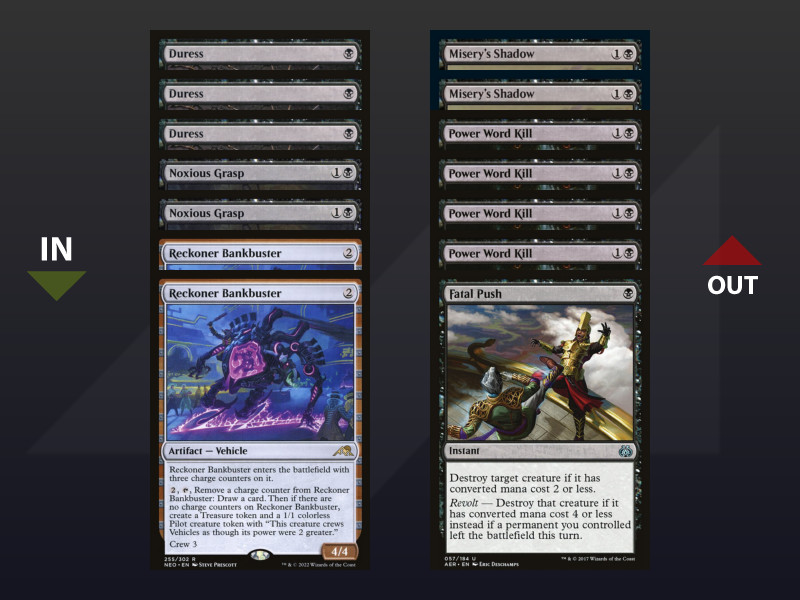
The games play out very differently in the main deck and post sideboard. In the main deck, Azorius is loaded with counterspells and opts for a defensive playstyle, responding to each and every threat while aiming to reach the game-winning sequence of untapping with a Teferi, Hero of Dominaria or flashing back a Memory Deluge.
The main deck games have two distinct phases: before and after the opponent has 5 mana due to the presence of Teferi, Hero of Dominaria. Before they reach 5 mana, they can't really punish you on their turn, so you're free to play your cards to optimize trades with theirs. This means you want to avoid Dovin's Veto/Censor when they have two mana, play your less critical cards when they have three mana (Absorb), and present a must-counter threat when they have four mana, to make their choice of casting Memory Deluge as costly as possible.
However, once they hit their 5th land drop, the game changes. You need to present lethal damage to the planeswalker if it were to come onto the battlefield, so they can't play it and must first address your board. By doing so, you might have to expose yourself to unfavorable trades, as it's difficult to maneuver against a full instant deck. There are various game-losing scenarios at this point, such as a cycled Shark Typhoon ambushing a creature in combat or an Aetherling stabilizing multiple creatures.
This is why Thoughtseize is so crucial in this matchup, and why you want to use the card tactically to prevent these scenarios from happening, not merely to "remove a card". The knowledge of your opponent's hand you gain from casting Thoughtseize on turn one can become obsolete by turn five. The opponent will have drawn so many new cards that many questions arise. It's not always possible to slow-play Thoughtseize, partly because you don't always know what you're up against in the early game. But when you can, try to delay playing it so you can clear the way before launching an attack.
After sideboarding, things change dramatically. Duress and Thoughtseize are so effective against counterspells that Azorius brings in numerous threats to shift more towards a tap-out playstyle, often sideboarding out the most unwieldy of their counterspells. Also, you can bring in more answers to Teferi, which lets you avoid needing to present lethal damage to it each turn. This means you can focus on trading your cards effectively.
VS Mono-Green Devotion

The game plan here is essentially one of attrition: destroy everything and win with whatever remains. You're aiming to play a game with minimal resources, and you achieve this by trading cards as frequently as possible. Mono-Green can top-deck effectively if they have ample mana, and this is why I bring in Duress. The most efficient way to disable their potential top-decks is to suppress their mana engine. Playing numerous Duress effects does run the risk of drawing multiple copies in the midgame, but I believe this is a risk we must take, as shutting down Mono-Green's early game is crucial.
Fable of the Mirror-Breaker tends to underperform in this matchup as it doesn't interact with the opponent the turn it comes into play. However, it gains value in the midgame once you've weathered the early game, where it can be used to recycle extra Duress copies drawn.
An important interaction to note is using removal in response to Cavalier's trigger, which nullifies the card's second ability. This interaction can be crucial in preventing Mono-Green from bouncing back.
VS Lotus Field
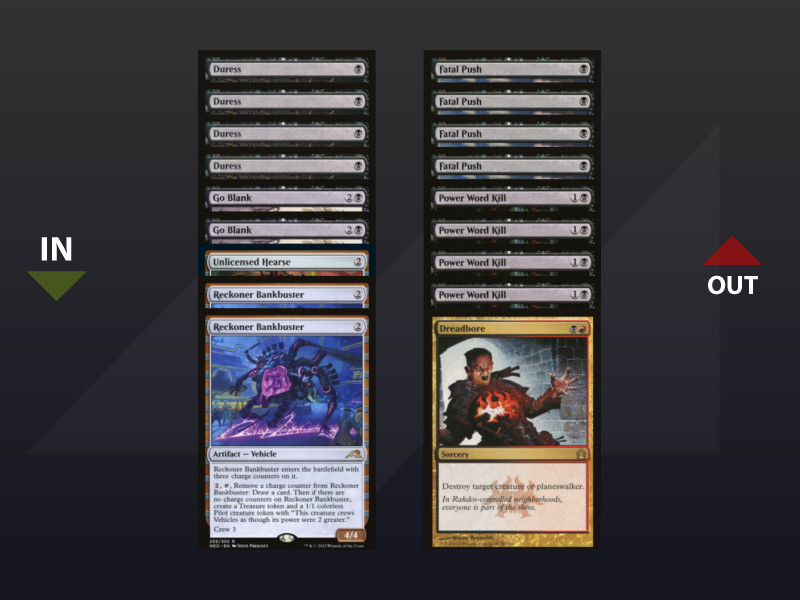
The matchup against Lotus Field is essentially a race. Typically, Lotus Field will combo-off on turn 5 in most games (Lotus on Turn 3, Thespian's Stage on Turn 4, then GG on Turn 5). When playing first, we can keep hands that pressure the opponent as long as we can achieve lethal before the turn 5 mark. However, they can accelerate their land drops with Arboreal Grazer and gain a crucial turn, so a straightforward beatdown curve may not always be sufficient.
When playing second, it's not feasible to outpace them, which makes Duress effects vital. Before turn 2, the objective is to prevent them from fetching their Lotus by using Duress on Sylvan Scrying. Once they've secured their key land card, shift your focus to combo pieces such as Pore Over the Pages, Hidden Strings, and Emergent Ultimatum.
VS Izzet Creativity
Creativity actually encompasses three different archetypes, each with different targets: Atraxa, Worldspine Wurm/Xenagos, and Torrential Gearhulk. Their decks also vary depending on the target. For example, Wurm/Xenagos variants play cards like Secrets of the Key and Big Score to have two non-creature targets for their Creativity, while Torrential Gearhulk versions often play Magma Opus/Sublime Epiphany to have powerful instants to flashback, and they frequently run Divide by Zero as well. If you don't see Secrets/Big Score or Opus/Epiphany/Divide by Zero in their deck, you're most likely playing against an Atraxa variant.
The game plan remains the same: prevent them from resolving Creativity with discards and beat them down in the meantime. This strategy also applies to the Torrential Gearhulk version, but you can still play the game after their creature comes into play. That is a liability for them but they get to have a deck that is better suited to play a midrange game.
VS Worldspine Wurm/Xenagos
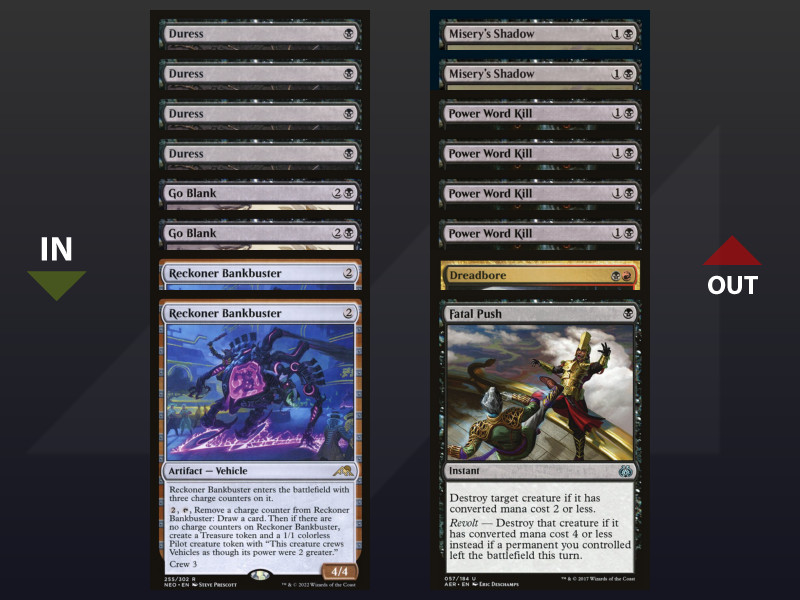
Against the Wurm variant, you can't beat the 15/15. Your opponent is likely to side out Xenagos to make it easier to land the Wurm and beat you with that single threat. We don't have enough slots to side out all our removals and Misery’s Shadow, so we can keep some Fatal Push. It's still acceptable for dealing with sharks and Fables.
VS Torrential Gearhulk

Beating a 5/6 is doable, so we prefer Power Word Kill over Fatal Push. Therefore, we have the same sideboarding plan as against the Wurm version, but we just swap the Pushes and Power Word Kills.
VS Atraxa Neoform
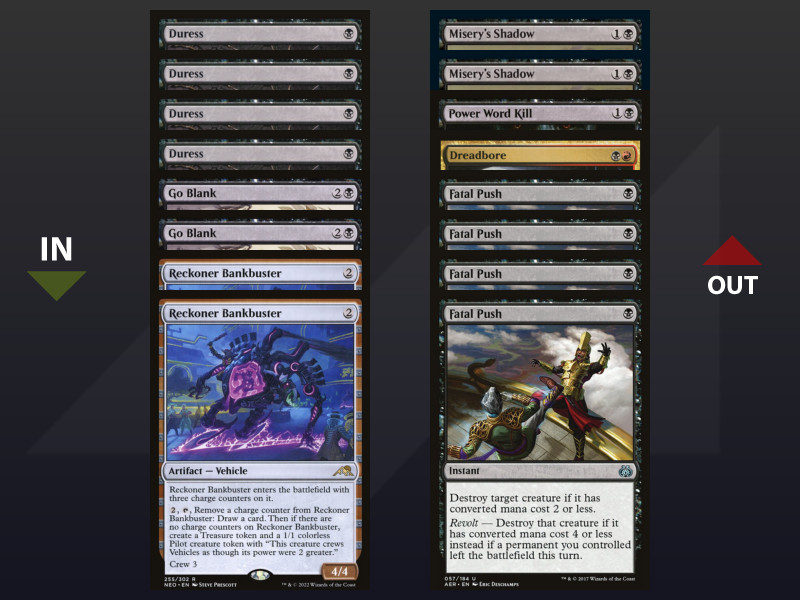
This is the easiest matchup. Atraxa doesn't win on its own and can be beaten, while still being a useless card when drawn. We keep some Power Word Kills to deal with it and maintain pressure. It often happens that Atraxa tries to stabilize at a very low life total. Keep in mind that you can destroy your own creatures in combat to prevent lifelink from occurring.
VS White Weenie
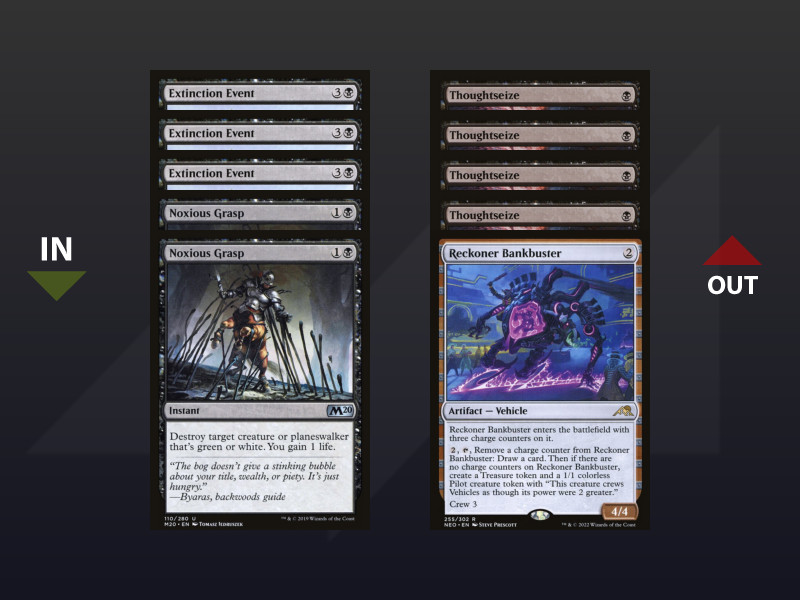
The game plan against creature-centric decks remains consistent: eliminate all their cards, stabilize with what's left, and eventually defeat them with Sheoldred/Reflections of Kiki-jiki.
There's a certain tension around the timing of your removal spells. Cards like Adeline and Luminarch Aspirant reward you for holding back your removal until the last possible moment, but Brave the Elements can severely punish such patience.
In the post-sideboard games, your opponents will likely side out creatures that are particularly vulnerable to removal (like Bruthal Cathar) and bring in cards that resist removal (like Wedding Announcement). While Wedding Announcement is a strong card against us, White Weenie decks don't have enough removal to take on a control role against Sheoldred/Reflections of Kiki-jiki. You'll want to play conservatively with your life total to create a winning scenario where you untap under one of these.
VS Abzan Greasefang
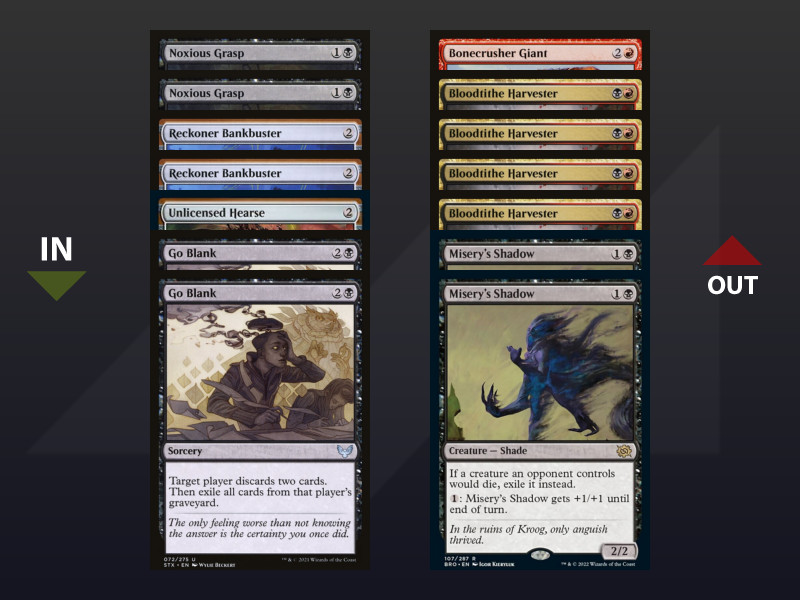
This archetype is a midrange/combo deck, which means they use the threat of their combo to force you to keep answers at the ready, and then play their midrange cards to outvalue you. As a result, you can't always keep your defenses up and will sometimes have to risk getting hit by their combo.
This is particularly true in the early turns of the game. When they pass with two mana up on turn 2, they threaten to cast Grisly Salvage, potentially milling Parhelion and Greasefang in their turn. You must accept this risk and continue to develop your board. There's only a 30% chance they'll mill a Parhelion, and even if that happens, they might still be missing Greasefang or the necessary lands to cast it. You're more likely than not to untap, but there's no guarantee. That's Magic.
After sideboarding, be cautious with Unlicensed Hearse. This card is incredibly powerful against them, as it can shut down their graveyard synergies and stabilize against Esika's Chariot. They do have answers to it, but one of them is Witherbloom Command, which destroys a noncreature permanent. If you animate your Hearse in response, it foils their Command, so you'll want to keep an untapped creature alongside your vehicle when possible.
VS Izzet Phoenix
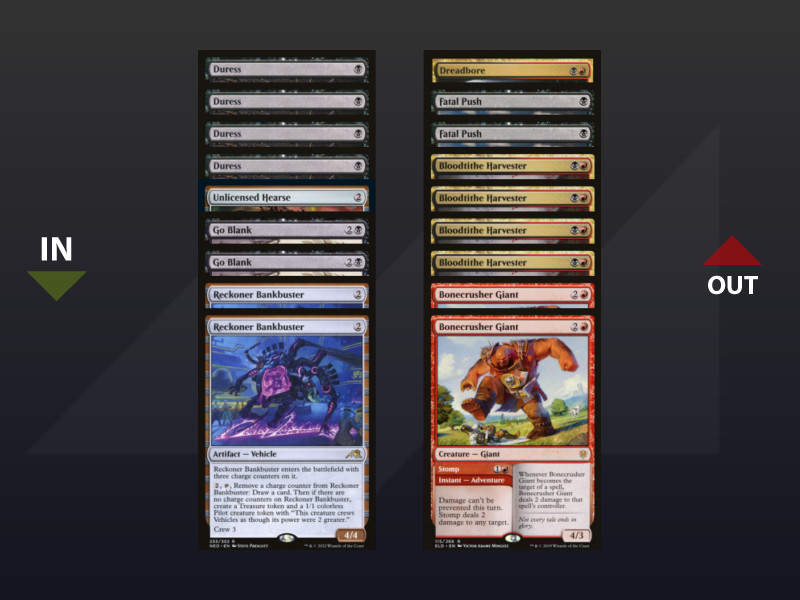
Izzet Phoenix presents a challenging matchup due to its effective removal options, significant card advantage, and resilient threats, making the midrange game tough for us. However, Sheoldred is a significant vulnerability for them, and we aim to focus our strategy around this card. They don't have many cards that can trade effectively with it (most decklists run 3 axes), and crucially, their primary method of finding removals – drawing cards – is a dangerous strategy against Sheoldred.
Another way they might try to deal with Sheoldred is by combining Fiery Impulse and Spikefield Hazard. As such, you'll want to play your other cards to soak up these removals, thereby clearing the path for Sheoldred.
Duress tends to perform poorly against cantrips and Treasure Cruise because these decks have a lot of redundancy and can easily rebuild. However, we want to utilize Duress to target removal spells in the same way as in pre-board games, aiming to resolve Sheoldred without contest.
Final Words
Pioneer is in excellent shape at the moment. There are numerous competitively viable decks, allowing for extensive exploration of decklists and matchups. While no perfect deck can answer everything, having a solid understanding of what people are likely to play provides you with the tools to adapt accordingly.
Until next time,
Rémi Fortier


